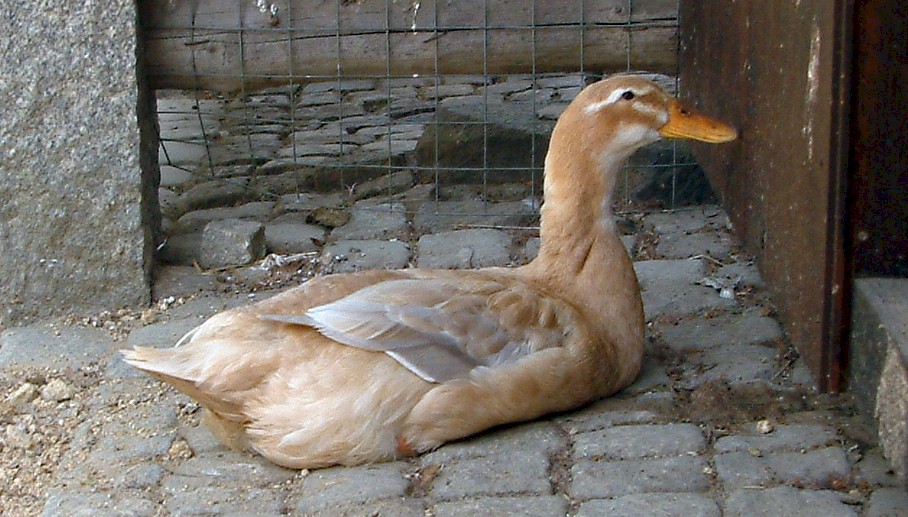Duck Breeds
The Saxony duck (German: Sachsenente) is a German breed of domestic duck. They are a dual-purpose breed, reared both for its eggs and for meat.
They are a heavy duck breed: drakes weigh about 3.5 kg, ducks about 3.0 kg. They are muscular and close-feathered. Physically, the Saxony resembles the Silver Appleyard. Their head is oval-shaped and is moderately large. The Saxony has a deep, full breast with plenty of width that is carried across the back of the bird and extends towards the tail. Their abdomen is broad and full, free of keel development as seen in exhibition-type Rouen ducks. The body is held at about 25° to the horizontal.
The Saxony has only one color variety, buff-blue mallard: the drake has a grayish-blue head, white neck-ring, and rust- or chestnut-coloured breast feathers; the duck is a rich, light buff color with two white stripes on each side of the face, one over the eye and the other from the eye towards the beak. Both drakes and ducks have a yellowish bill and orange legs and feet, although the standard specifies dark yellow.
The Saxony was bred in the 1930s by Albert Franz of Chemnitz, in the Free State of Saxony, by cross-breeding German Pekin, Blue Pomeranian and Rouen birds, and was first shown at Chemnitz-Altendorf in 1934. Almost all of the original stock was lost during World War II. After the War, Franz started breeding again from the remaining stock.
The Saxony was officially recognized in East Germany in 1957, in West Germany in 1958. ? Birds were taken to Switzerland in 1965 and to France in 1968. Saxony was recognised in the United Kingdom in 1982. Some were imported to the United States by David Holderread in 1984; the Saxony was admitted to the Standard of Perfection of the American Poultry Association in 2000.
In 2013 the total number in Germany was 1173. In North America, the breed is listed as "threatened" by the American Livestock Breeds Conservancy.
Content and photo source: Wikipedia.org.
